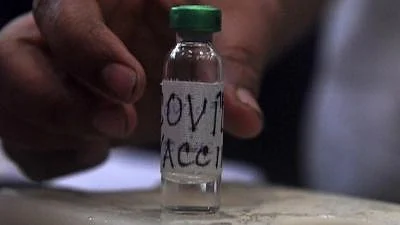The Global Covax program backed by the UN might fail to achieve its year end goals in vaccinating people in Latin America and the Caribbean, the WHO said on Wednesday, 6 October.
The program, an attempt to global equitable access to COVID-19 vaccines, is co-led by CEPI, Gavi, and WHO, alongside key delivery partner UNICEF.
Reasons for the Failure
The primary reason for the failure as mentioned by the WHO is the economic inequality between countries. Richer countries pay more for the vaccine doses and hence get supply at a faster rate reducing supply for poorer countries. The WHO claims that with rich countries paying more for vaccines, the supply for Latin America is falling short.
Science has played its part by delivering powerful, life-saving tools faster than for any outbreak in history. But the concentration of those tools in the hands of a few countries and companies has led to a global catastrophe, with the rich protected while the poor remain exposed to a deadly virus. We can still achieve the targets for this year and next, but it will take a level of political commitment, action and cooperation, beyond what we have seen to date.WHO Director-General Dr Tedros Adhanom Ghebreyesus, in a press release
"Covax aimed to provide enough doses this year for Latin American and Caribbean countries to inoculate 20 percent of their people. But most countries have only received around 30 percent of the supply they contracted through Covax," said Dr Jarbas Barbosa, assistant director of the Pan American Health Organization, a division of the WHO at a press conference.
Canada, Chile and Uruguay have each fully vaccinated over 70% of their population against Covid, while nations including Argentina, Ecuador, Panama and the US report vaccination rates of 50% or more, according to Our World in Data, which compiles vaccination figures from official public reports. But at least 10 countries across Latin America and the Caribbean have vaccinated less than 25% of their population, including Guatemala, Venezuela and Honduras. Current estimates indicate Haiti has fully immunized less than 1% of its population," CNBC reported.
Slow Vaccine production and delivery is yet another reason for causing the vaccine shortage. With India putting a hold on vaccine export during the second wave in May 2021, the delay was magnified.
India is the world's largest drug producer and domestic vaccine shortages compelled the country to prohibit sending of vaccines to other parts of the world, The New York Times reported.
Vaccine hesitancy is another problem among the people in the regions of Latin America and the Caribbean. "While we still face a shortage of vaccines in many of our countries, what we are saying is that in some areas, even when vaccines are available, persons are not coming forward," Pan American Health Organization (PAHO) Director Dr Carissa Etienne said at a briefing. In the Americas, the PAHO Revolving Fund is the recognized procurement agent for COVAX.
What Next?
While the Pan American Health Organization (PAHO) has struck separate deals to buy millions of vaccine doses from China’s Sinopharm and Sinovac, as well as AstraZeneca, the WHO launched the "Strategy to Achieve Global COVID 19 Vaccination by mid 2022" on Thursday, 7 October.
The aim of the Strategy is to "help bring an end to what has become a two-track pandemic: people in poorer countries continue to be at risk while those in richer countries with high vaccination rates enjoy much greater protection".
A WHO press release outlined the plan. Some of their actions include -
Working with COVAX, African Vaccine Acquisition Trust and other partners – world can and must meet WHO targets to vaccinate 40% of the population of all countries by the end-2021 and 70% by mid-2022.
Vaccine supply gaps to COVAX must be closed immediately for countries to reach the 40% year end target.
Vaccine-producing countries must allow the free cross-border flow of finished vaccines and raw materials and enable diversified vaccine production and sharing of knowledge.
Manufacturers must prioritize and fulfil COVAX and AVAT contracts as a matter of urgency.
Countries with high vaccine coverage must swap vaccine delivery schedules, with COVAX and AVAT to enhance coverage in countries in need.
(With inputs from CNBC and the New York Times)
